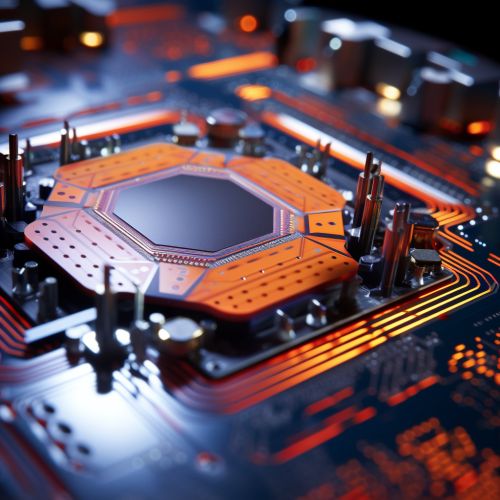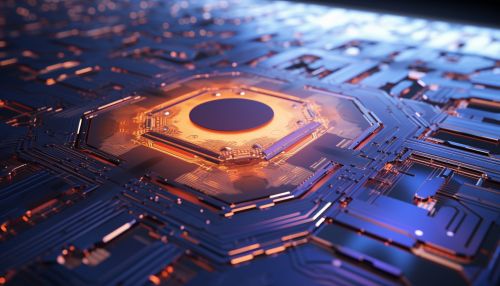Superconducting quantum computing
Introduction
Superconducting quantum computing is a type of quantum computing that uses circuits made out of superconducting electrical elements to create quantum systems for computation. The superconducting circuits, known as quantum circuits, are designed to generate and manipulate quantum bits, or qubits, which are the fundamental units of quantum information.


Superconducting Circuits
Superconducting circuits are made from electrical elements, such as inductors and capacitors, that are fabricated from superconducting materials. These materials exhibit superconductivity, a quantum mechanical phenomenon where electrical resistance in the material drops to zero below a certain critical temperature. This property is crucial for the operation of superconducting quantum circuits, as it allows for the creation of qubits with long coherence times.
The most common type of superconducting circuit used in quantum computing is the Josephson junction, a type of superconducting tunnel junction made from two superconducting materials separated by a thin insulating barrier. The Josephson junction exhibits quantum mechanical behavior, such as the Josephson effect, which is used to create and manipulate qubits.
Qubits
In superconducting quantum computing, qubits are created by placing a superconducting circuit into a quantum superposition of two distinct states, typically denoted as |0⟩ and |1⟩. These states correspond to the presence or absence of a single quantum of magnetic flux in the superconducting circuit, respectively.
The ability to create and manipulate qubits is a key requirement for quantum computing. Unlike classical bits, which can be in one of two states (0 or 1), qubits can exist in a superposition of states, allowing them to represent multiple possibilities at once. This property, along with the ability to entangle qubits, gives quantum computers their potential for solving certain problems more efficiently than classical computers.
Quantum Gates and Quantum Algorithms
Quantum computation is performed by applying a sequence of quantum logic gates to a set of qubits. Quantum logic gates are operations that change the state of a qubit or a group of qubits. They are the quantum equivalent of classical logic gates, but with the added ability to create and manipulate quantum superpositions and entanglement.
Quantum algorithms, such as Shor's algorithm for factoring large numbers and Grover's algorithm for searching unsorted databases, are designed to take advantage of these quantum properties to solve problems more efficiently than classical algorithms.
Challenges and Future Directions
Despite the significant progress in superconducting quantum computing, there are still many challenges to be overcome. One of the main challenges is the issue of quantum decoherence, where the quantum states of the qubits lose their coherence due to interactions with the environment. This leads to errors in the computation, which need to be corrected using quantum error correction techniques.
Another challenge is scaling up the number of qubits while maintaining their quality. Current superconducting quantum computers have on the order of tens to hundreds of qubits, but it is estimated that millions of high-quality qubits may be needed to perform useful quantum computations.
Despite these challenges, the field of superconducting quantum computing continues to advance at a rapid pace, with ongoing research in areas such as new materials for superconducting circuits, improved qubit designs, and novel quantum error correction techniques.
